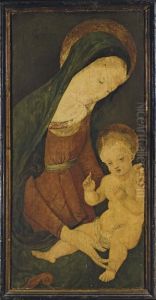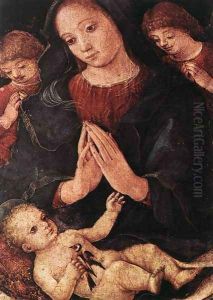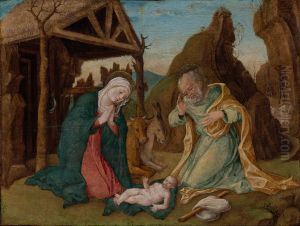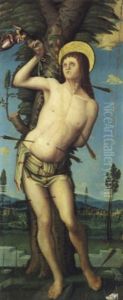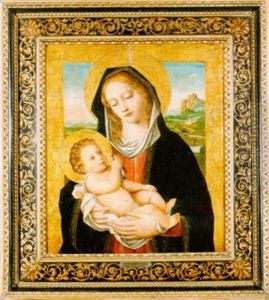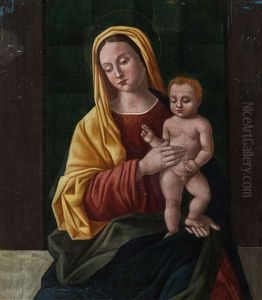Liberale Da Verona Paintings
Liberale da Verona, born in 1445 in Verona, Italy, was a distinguished painter, illuminator, and manuscript decorator of the Italian Renaissance. His artistic journey is a reflection of the vibrant cultural and artistic milieu of 15th-century Italy, a period known for its revolutionary advancements in art and thought. Liberale's work is characterized by its meticulous attention to detail, vibrant colors, and the emotional depth of its religious themes, which were predominant in the art of this era.
Liberale's early training is somewhat obscure, but it is believed that he was initially influenced by the Veronese school, particularly by the works of artists such as Pisanello, who was known for his intricate attention to detail and his work in both painting and medal-making. Liberale's own style, however, soon evolved, showcasing a unique blend of influences that included not just local Veronese elements but also aspects of Mantegna's work, especially in his use of perspective and the robust, sculptural quality of his figures.
Throughout his career, Liberale da Verona undertook numerous commissions that spanned a variety of mediums, including altarpieces, frescoes, and illuminated manuscripts. One of his most celebrated works is the 'Madonna and Child Enthroned', which exemplifies his skill in creating depth and volume through the use of chiaroscuro, a technique that became a hallmark of Renaissance art.
Despite the high quality of his work, Liberale's career was marked by a certain level of itinerancy. He worked in various cities across Italy, including Siena and Mantua, where he contributed to the artistic landscape by imparting his distinctive style and influencing local artists. His later years saw a return to Verona, where he continued to produce works of art that combined the piety and expressive intensity characteristic of the era's religious art with his own meticulous approach to composition and detail.
Liberale da Verona's contributions to the Renaissance were not limited to his paintings. His work as an illuminator of manuscripts is particularly noteworthy, with several surviving examples demonstrating his ability to translate the grand themes of Renaissance art into the miniature scale of book decoration. These works are celebrated for their intricate detail, vivid coloration, and the dynamic compositions that bring biblical and classical narratives to life.
Liberale da Verona died in 1526, leaving behind a legacy that, despite not achieving the widespread fame of some of his contemporaries, remains significant for its contribution to the development of Renaissance art in Italy. His works continue to be studied and admired for their beauty, technical skill, and the insight they provide into the artistic and cultural context of 15th-century Italy.





